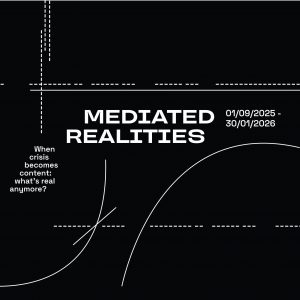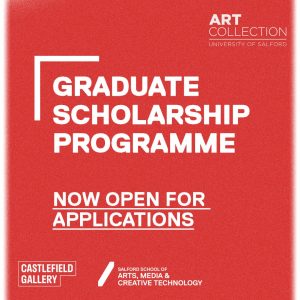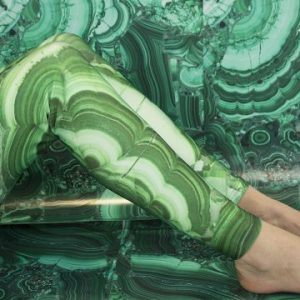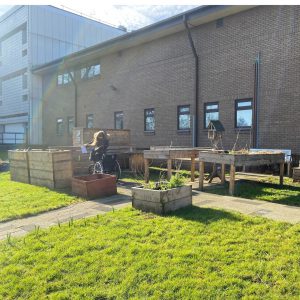
New exhibition coming soon: Mediated Realities
A new exhibition coming to the New Adelphi Exhibition Gallery at the University of Salford in September 2025.

A new exhibition coming to the New Adelphi Exhibition Gallery at the University of Salford in September 2025.

COMING SOON - An new exhibition exploring the way artists have dealt with times of crisis and conveying information in the modern era - curated by our Team Assistant; Sam Parker.

A new artist development and commission opportunity for early career or emerging creative connected to Salford - wishing to explore creative technologies. Deadline to apply: 11 August 2025

In May 2025 our Artist in Residence at the University of Salford Acoustic Labs, Hayley Suviste, presented a 3-part installation as part of Sounds From The Other City. Artist Lizzie King shares her experience of 'From The River's Mouth' here.

In Spring 2025 we launched an ambitious exhibition of new work by artists Mishka Henner and Emily Speed, in partnership with the Castlefield Gallery, Open Eye Gallery and Energy House Labs. The exhibition is the culmination of 18-month Artist Residencies with Energy House 2.0 at the University of Salford. Find out more here.

The Graduate Scholarship Programme is now open to applications to 2025 Graduates from the School of Art, Media and Creative Technology! Find out how to apply here!

Want to know more about our Artists in Residence at Energy House 2.0? In this special edition of Talking Salford Podcast, both Mishka Henner and Emily Speed talk about their practices, projects, careers, and the work they are doing in collaboration with Energy House 2.0!

Artist in Residence with Energy House 2.0, Emily Speed, discusses her work and sustainability.

Artist Lizzie King shares her motivations for working on Sustaining Photography, and why working sustainably as an artist is important to her practice.

Socially Engaged Photographer Gwen Riley Jones shares why the Sustaining Photography project is important to her.